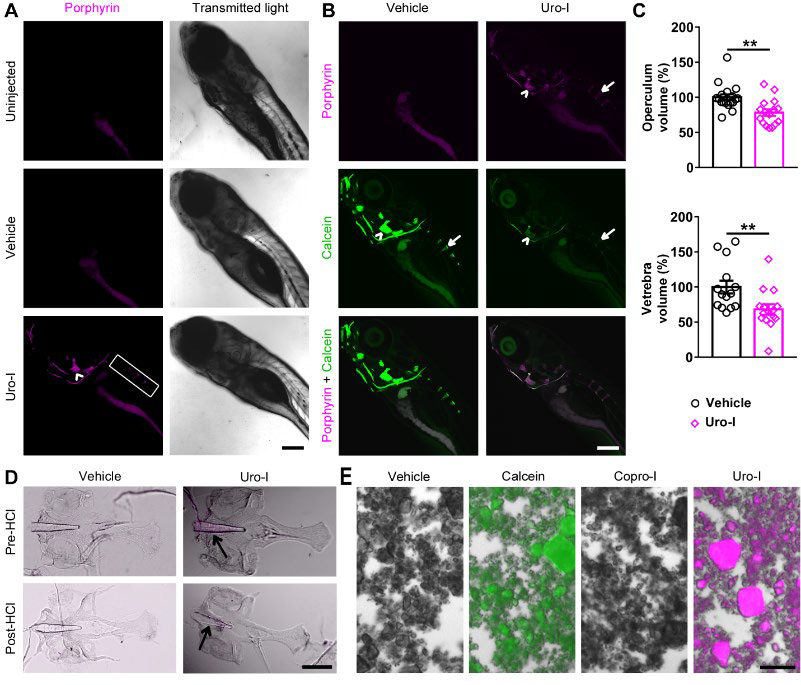
Zebrafish model of CEP develops bone phenotype resembling human disease

Invention Summary:
Congenital erythropoietic porphyria (CEP) is a rare genetic disorder leading to accumulation of uro/coproporphyrin-I (uro-I) in tissues due to inhibition of the enzyme uroporphyrinogen-III synthase. Clinical manifestations of CEP include bone fragility, severe photosensitivity and photo-mutilation. Currently there is no specific treatment for CEP, except bone marrow transplantation. There is a clear need for treating this orphan disease.
Rutgers researchers have found that uro-I accumulation leads to protein aggregation and CEP-related bone phenotype since fluorescent porphyrins cause protein aggregation and have developed a zebrafish model that phenocopies features of CEP. As in human patients, uro-I accumulated in the bones of zebrafish, leading to impaired bone development. In an osteoblast-like cell line, uro-I decreased mineralization, aggregated bone matrix proteins, activated endoplasmic reticulum stress and disrupted autophagy.
Using high-throughput drug screening, the researchers have identified acitretin, a second-generation retinoid, that reduces uro-I accumulation and its deleterious effects on bones. Another retinoid, tretinoin showed porphyrin clearance in zebrafish. These findings provide a new CEP experimental model and the use of retinoids as potential repurposed therapeutics for CEP.
Advantages:
- Considerably reduced R&D costs and drug development timeline due to the use of currently approved FDA drugs: acitretin and tretinoin
Market Applications:
- Use of acitretin and tretinoin (orally or as a cream) as a repurposed therapeutic for CEP
Intellectual Property & Development Status: Patent pending. Available for licensing and/or research collaboration.